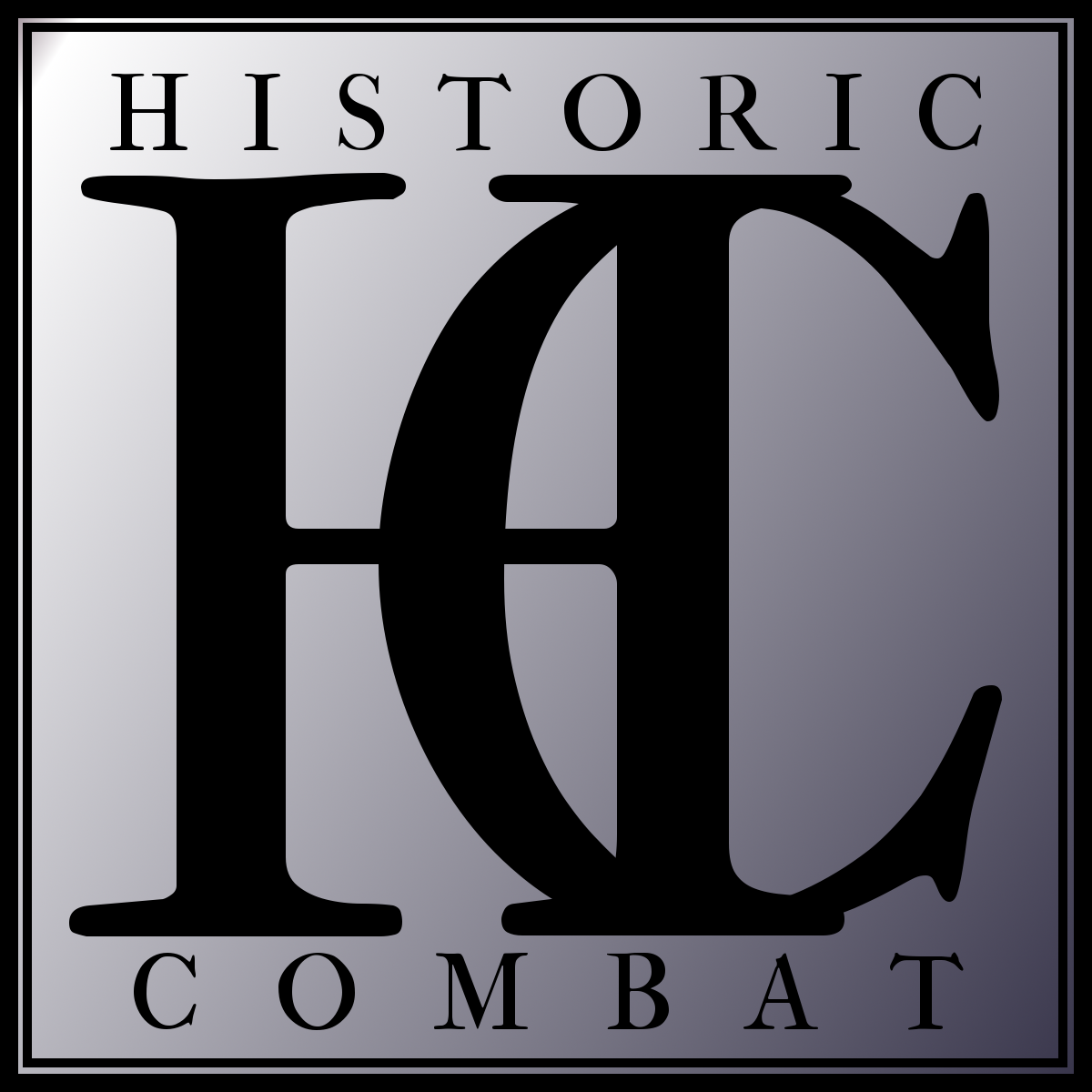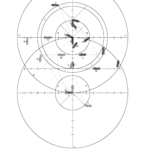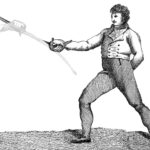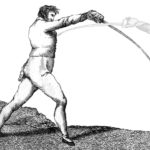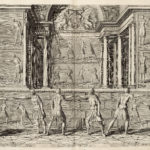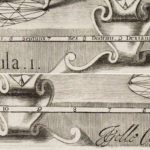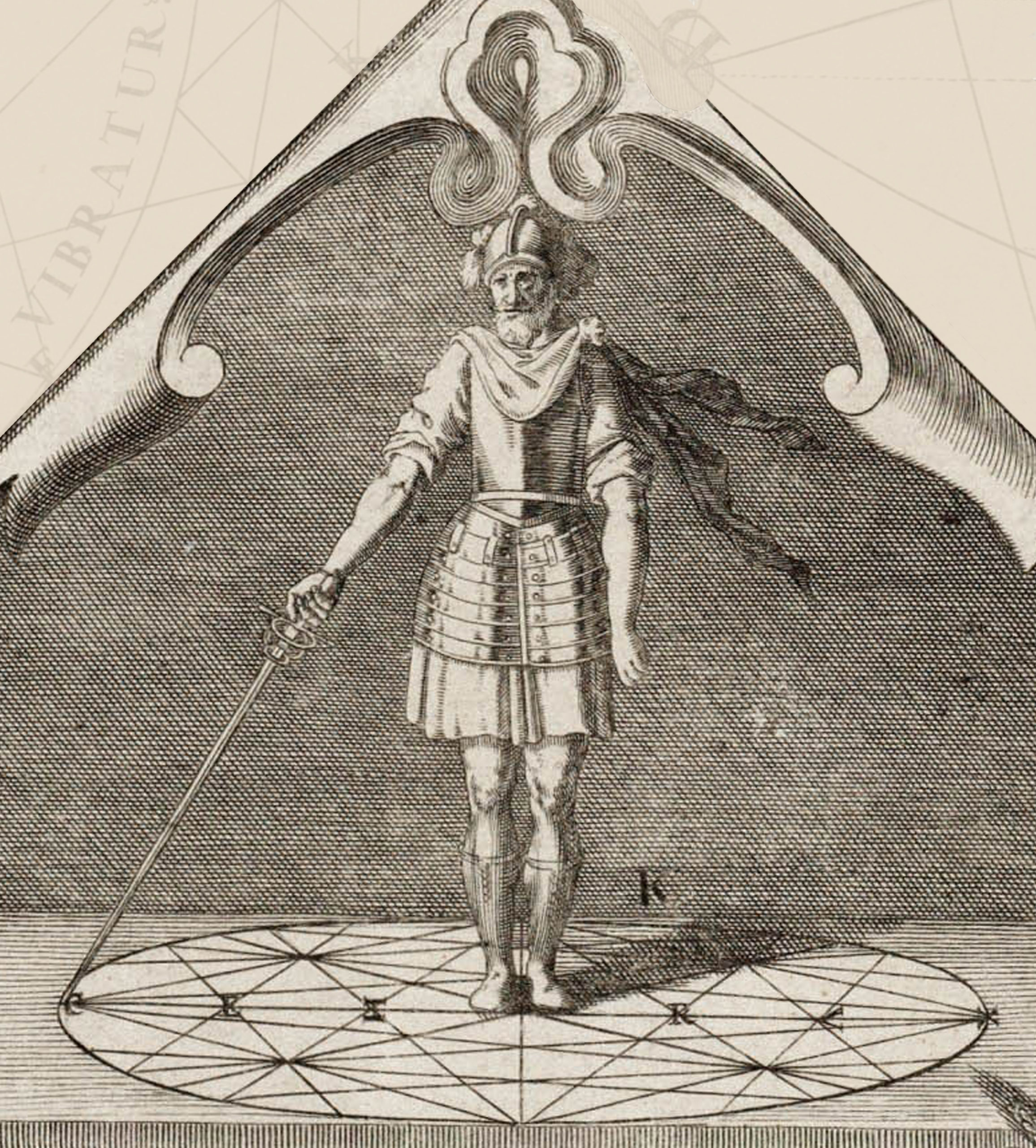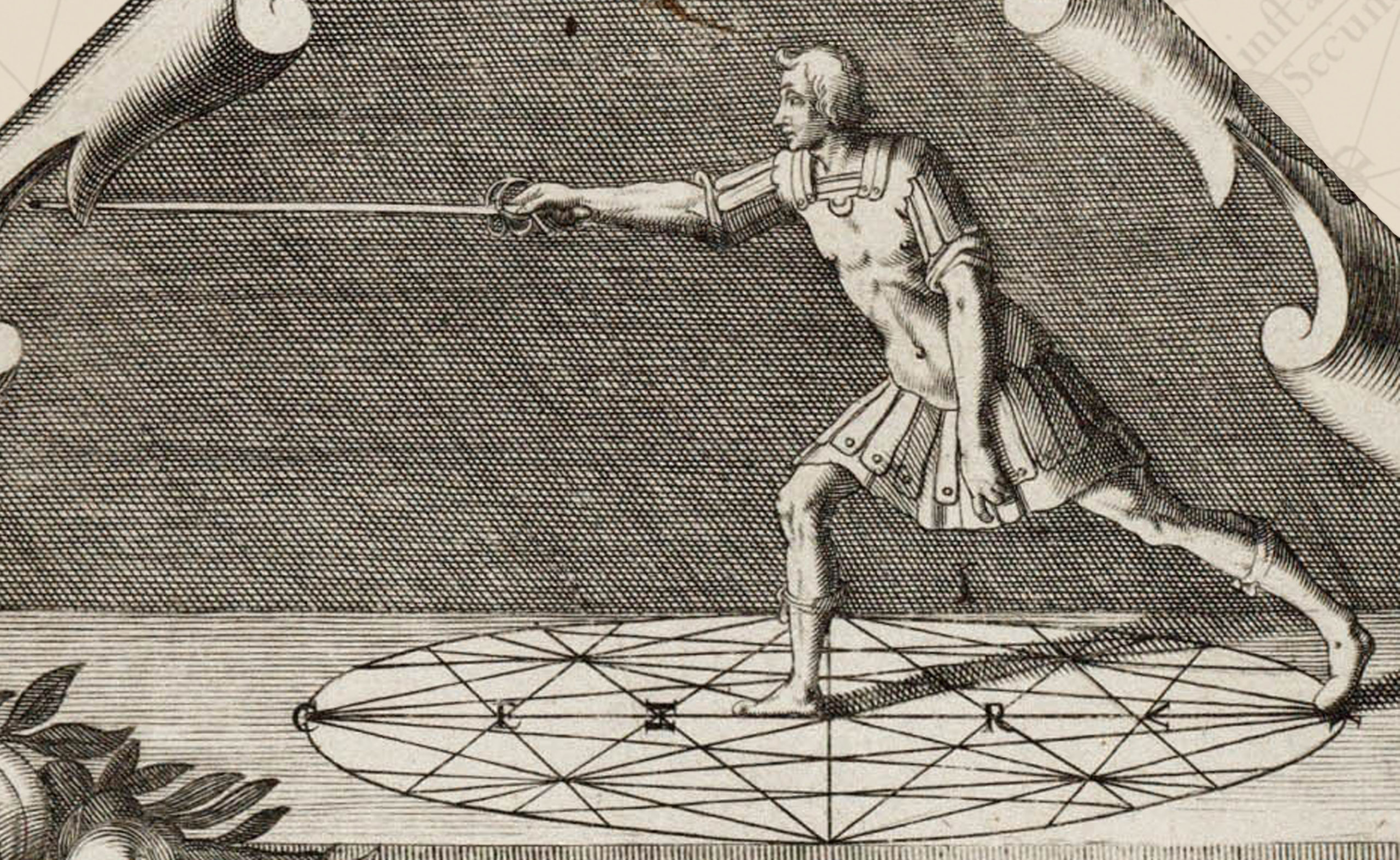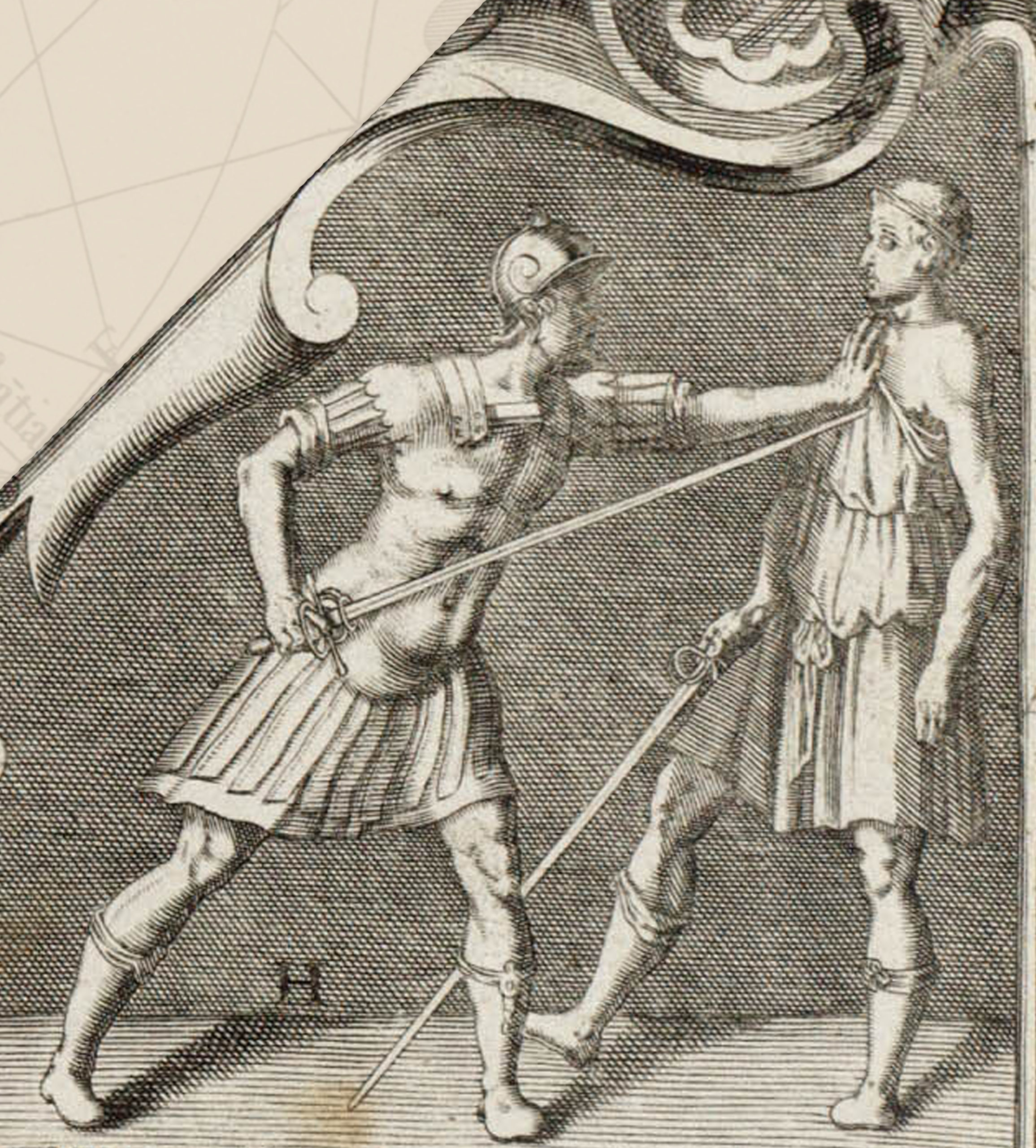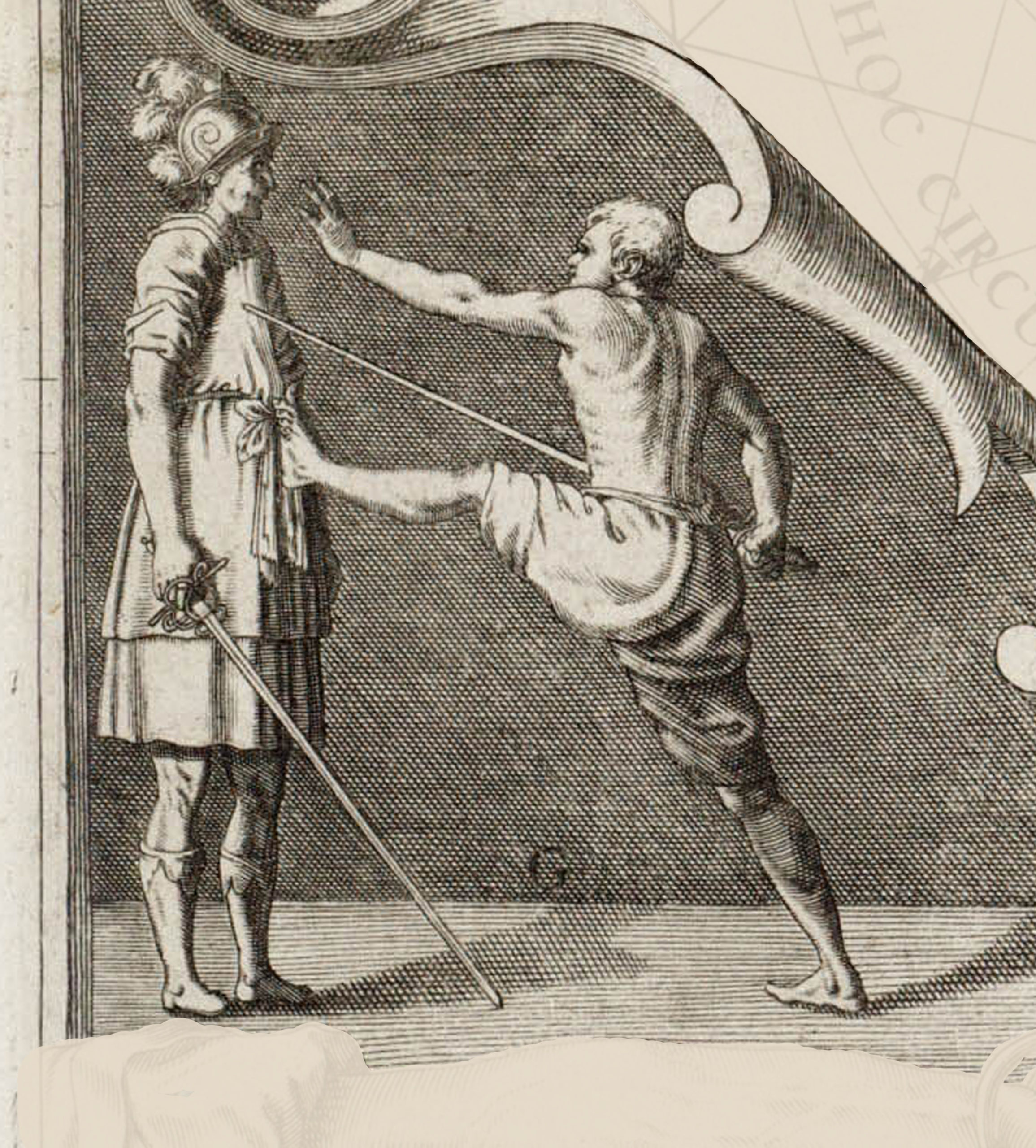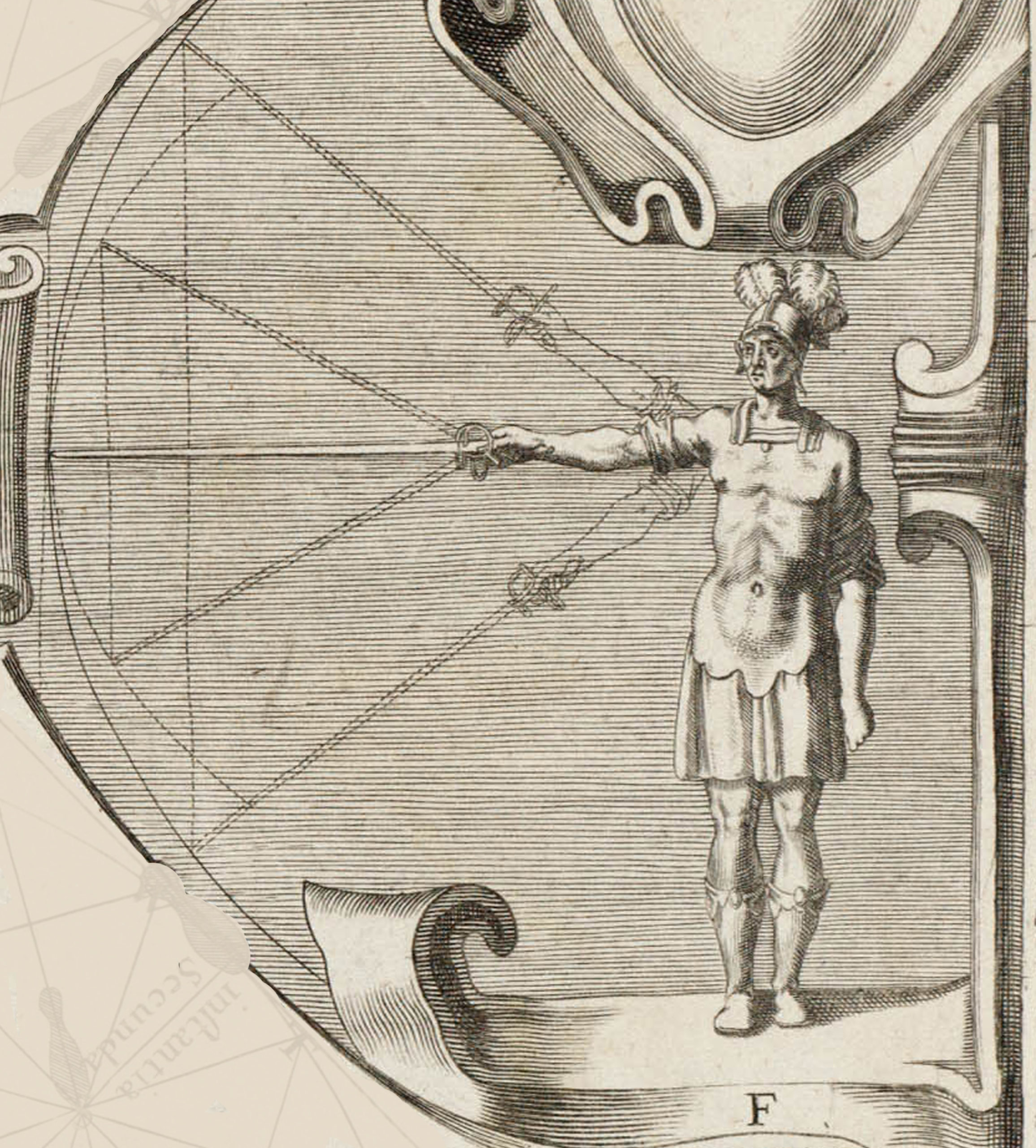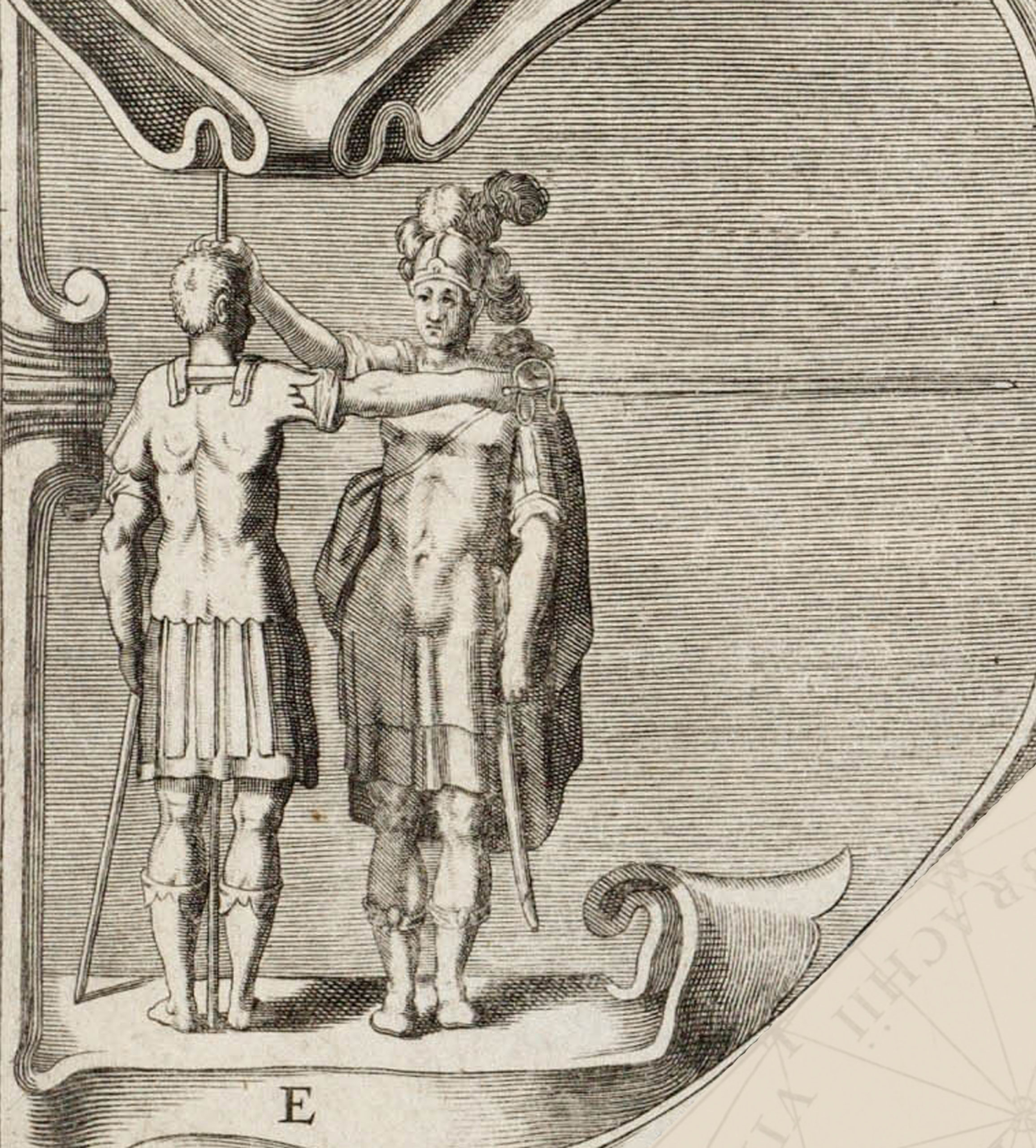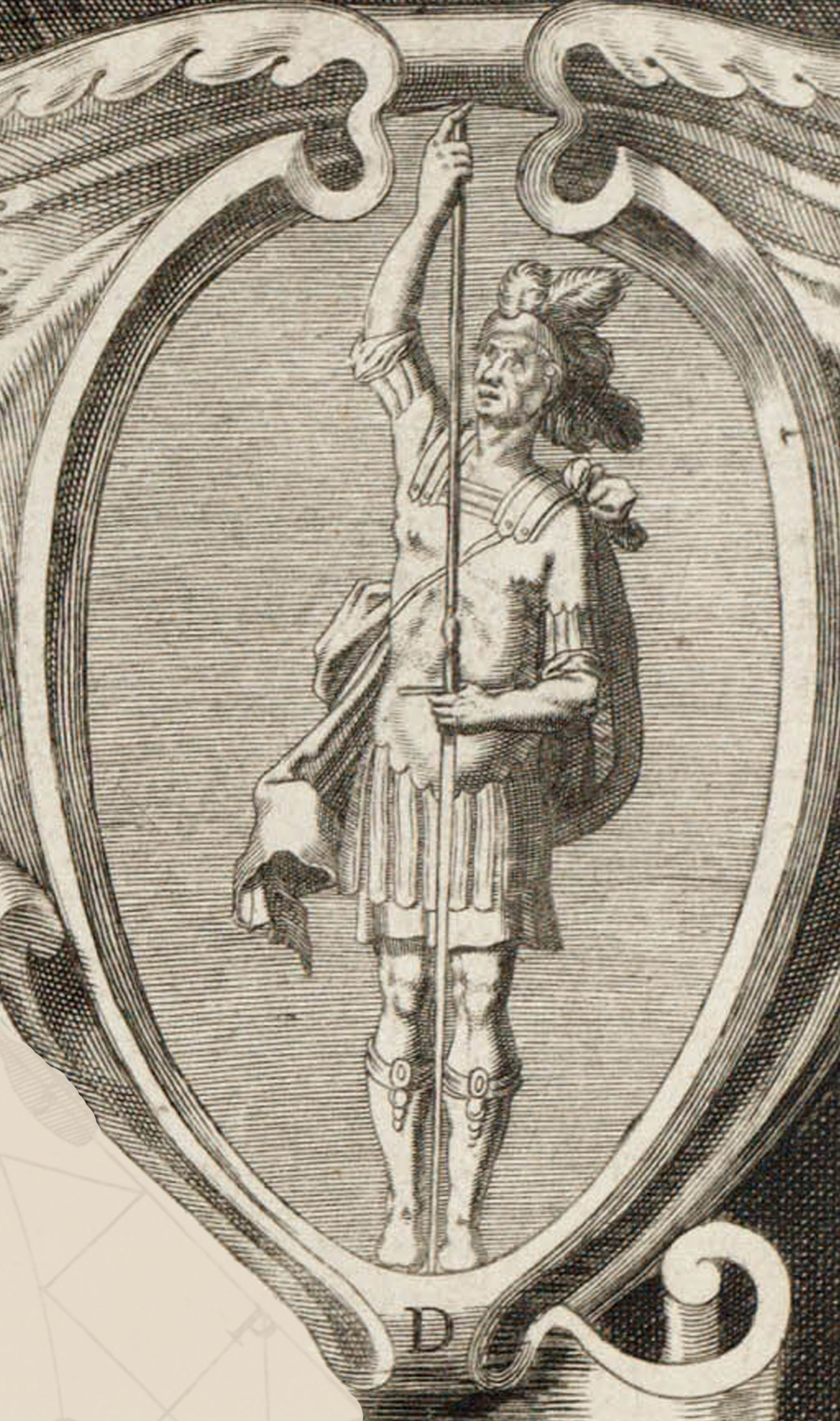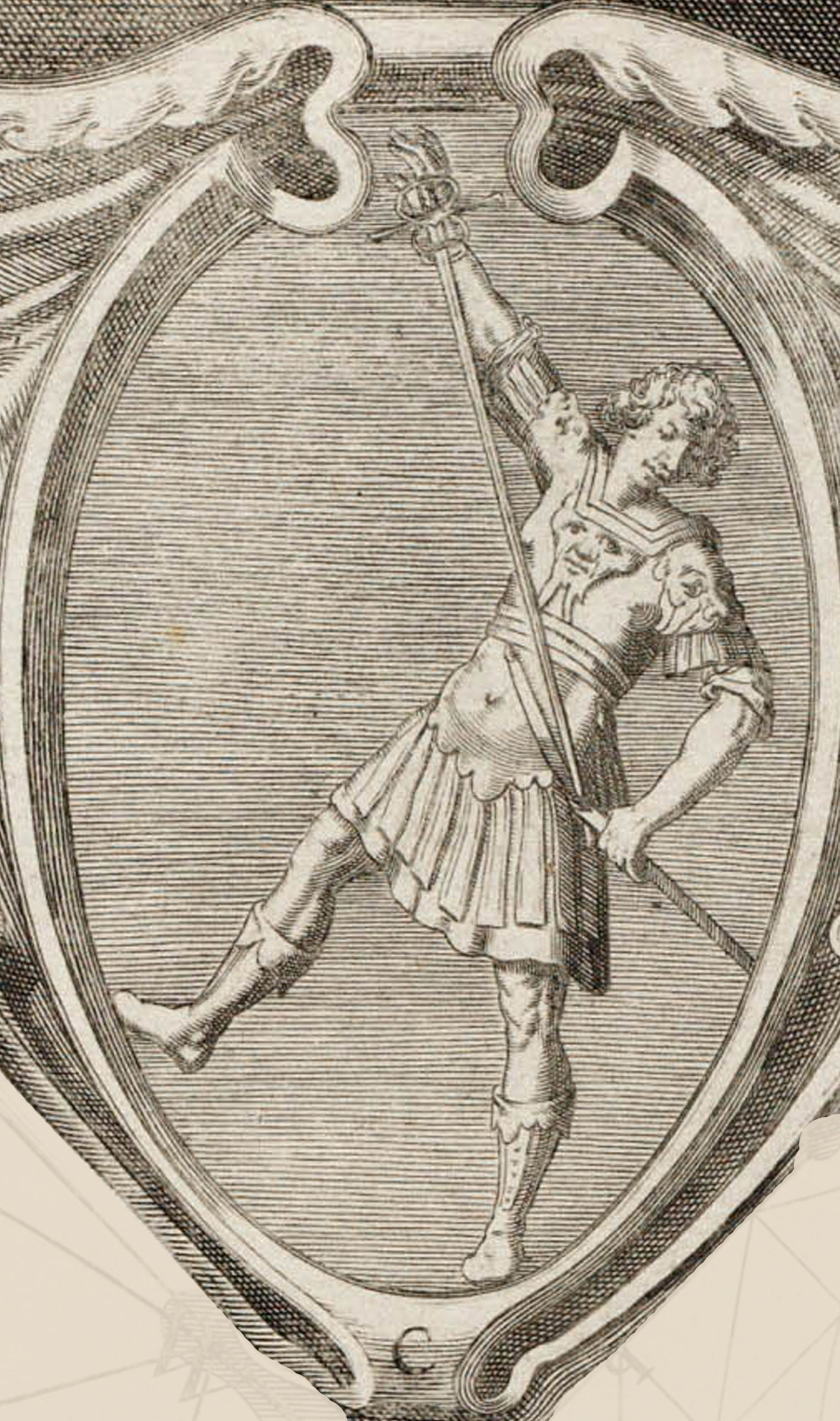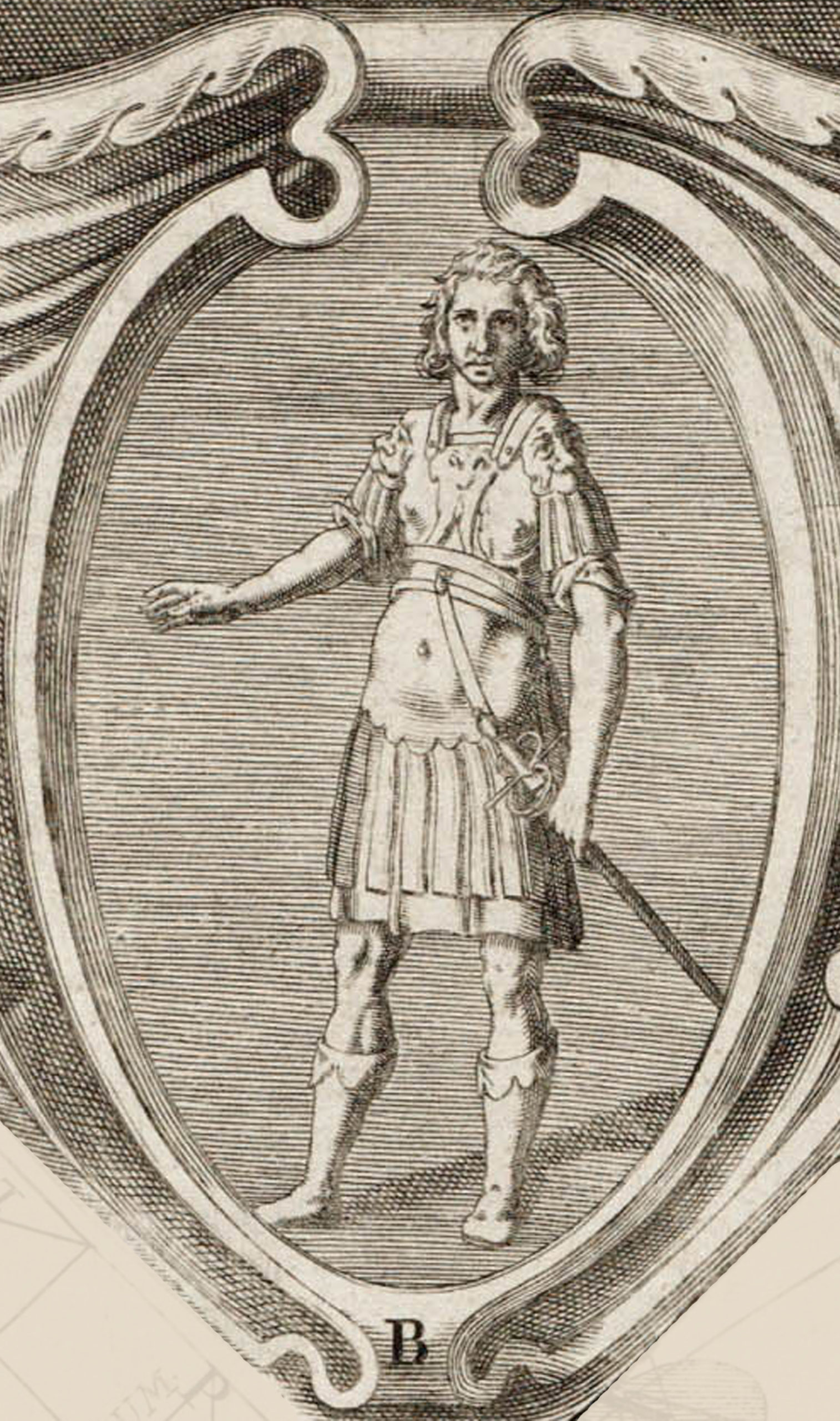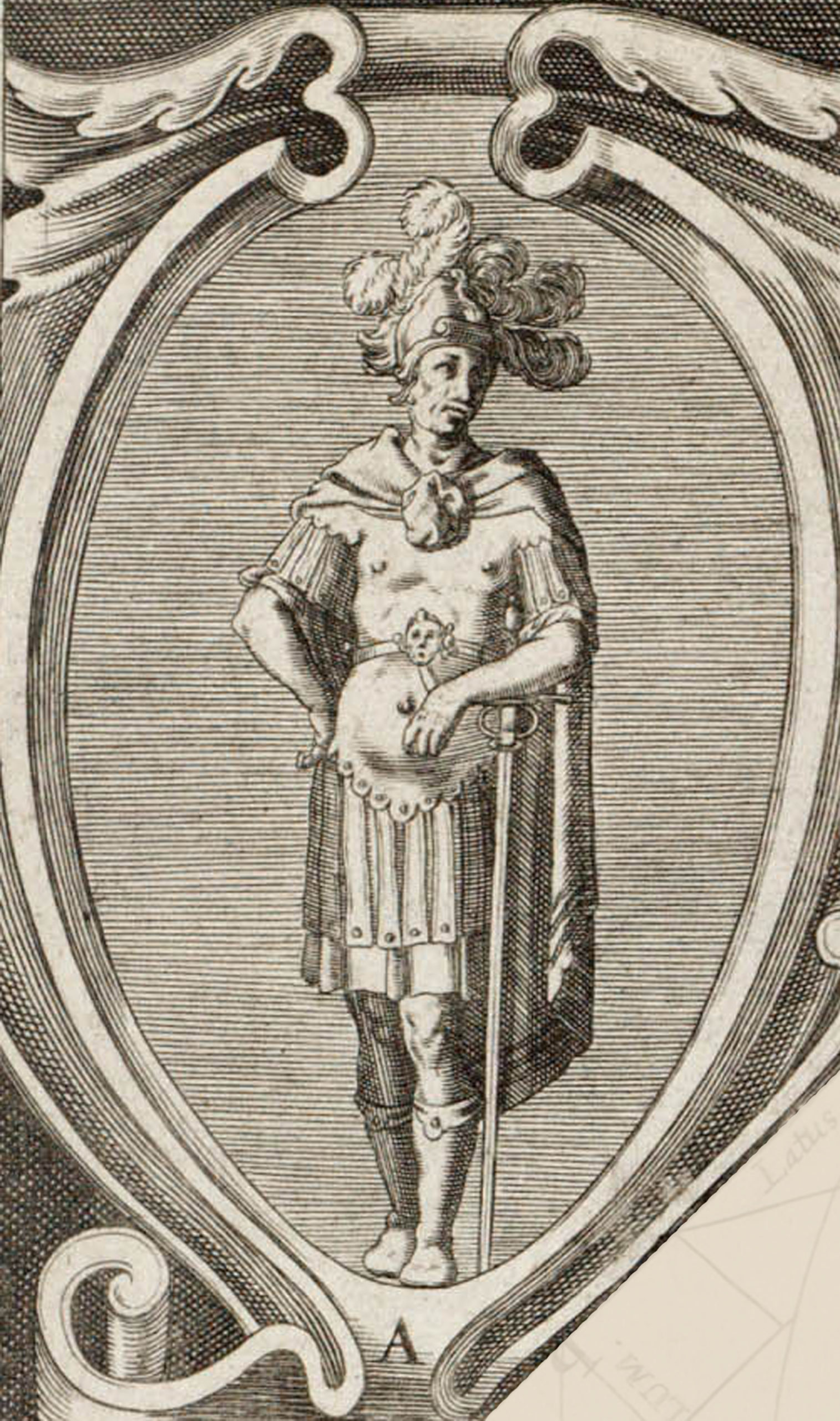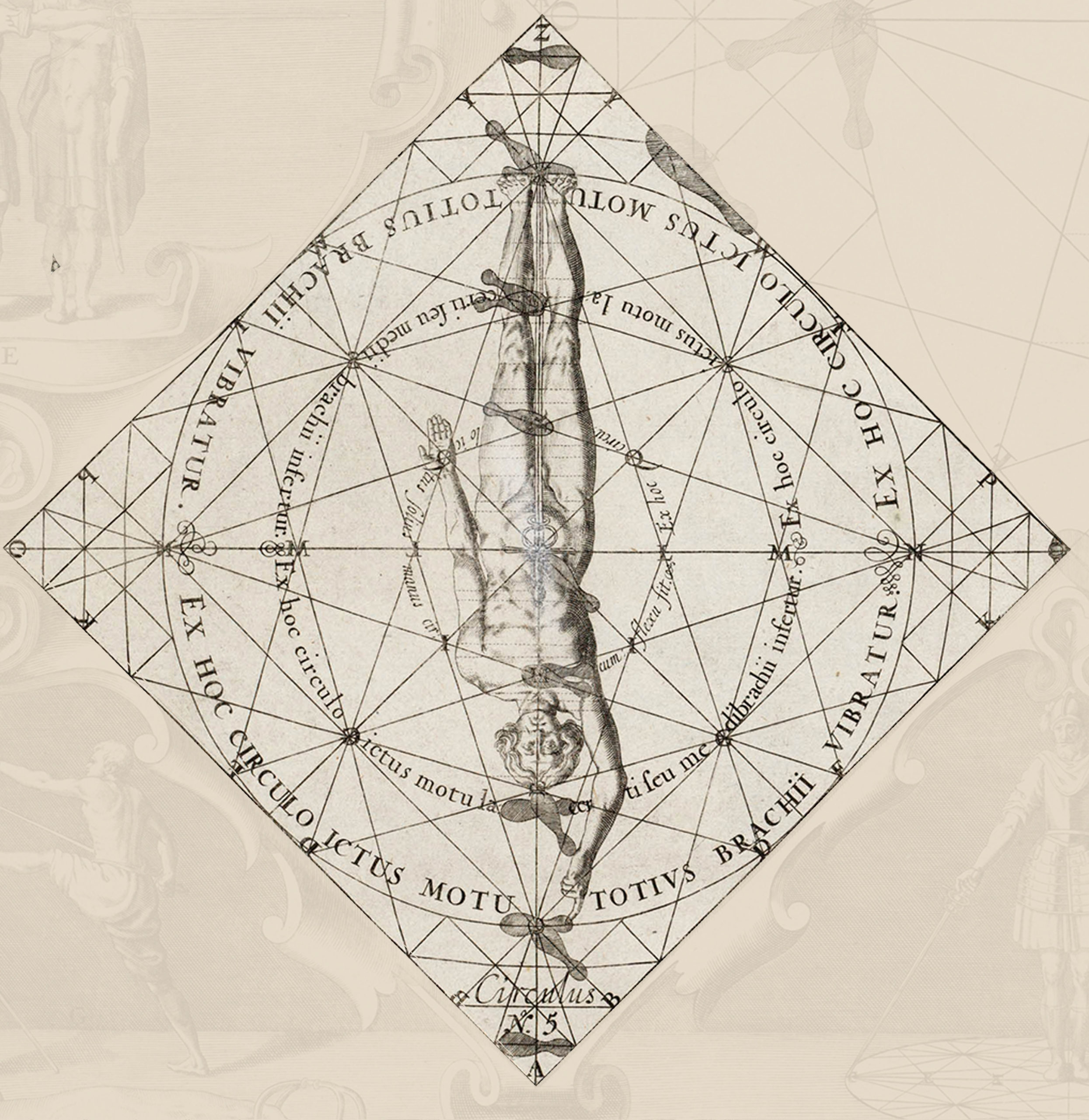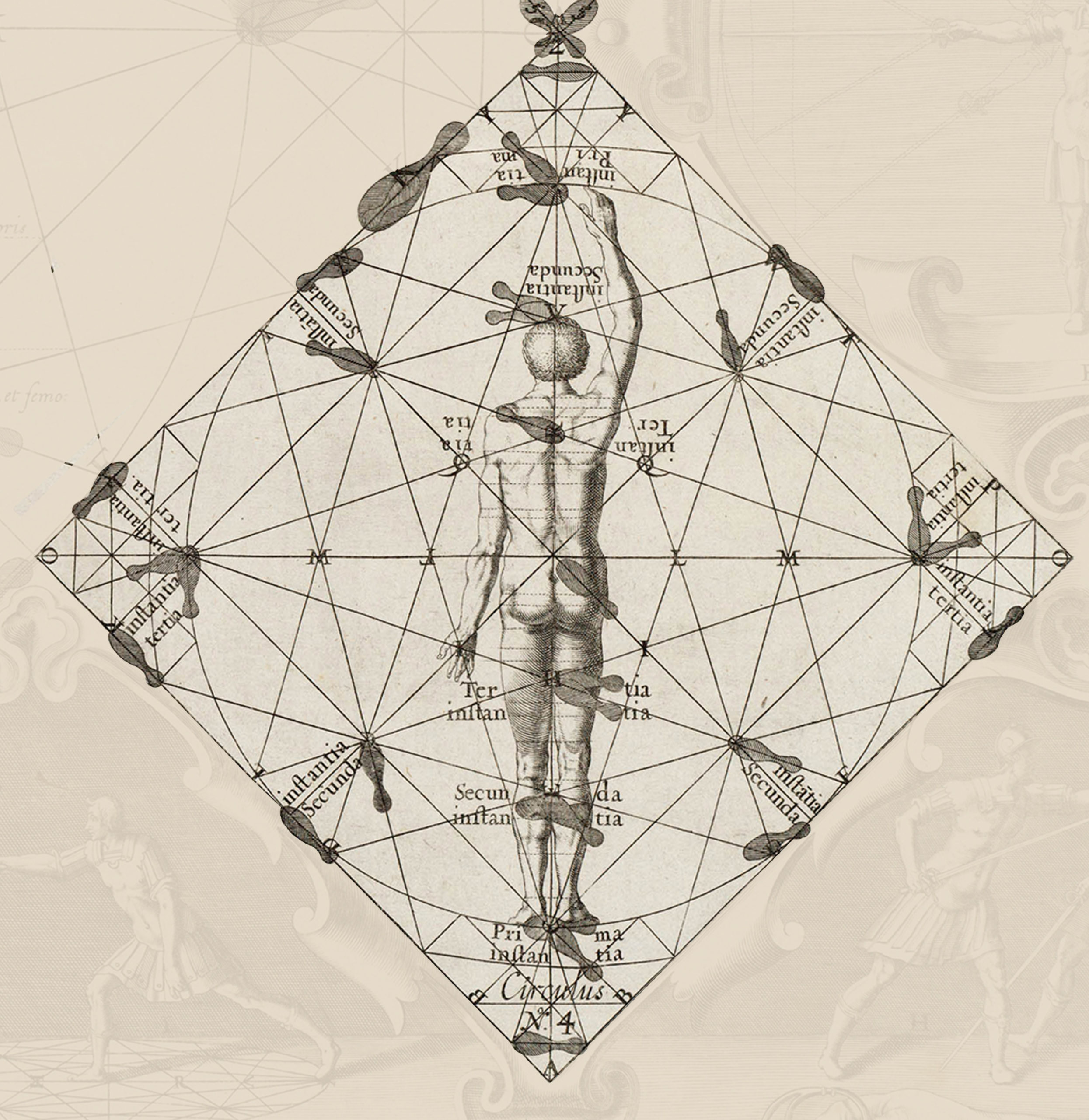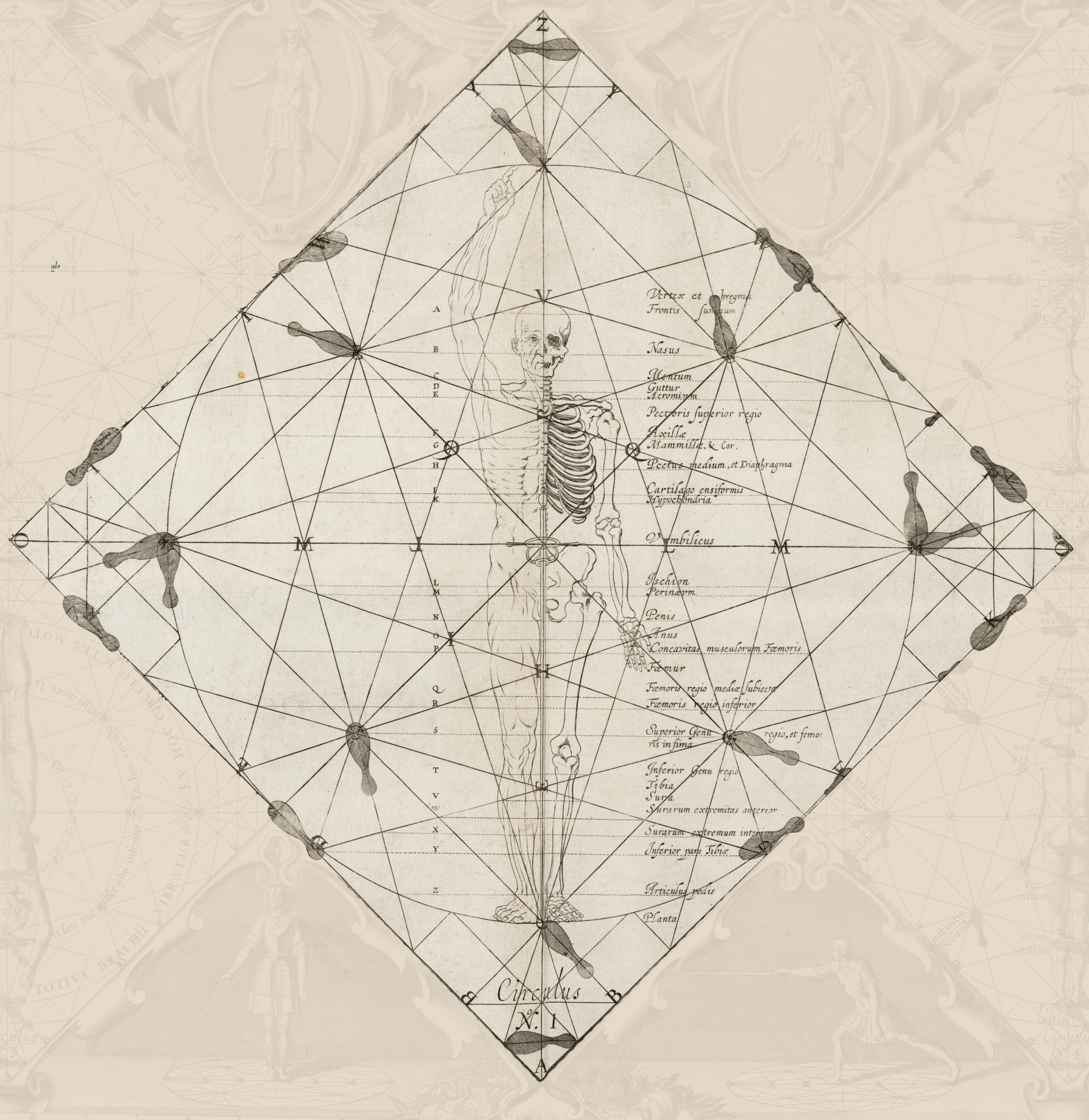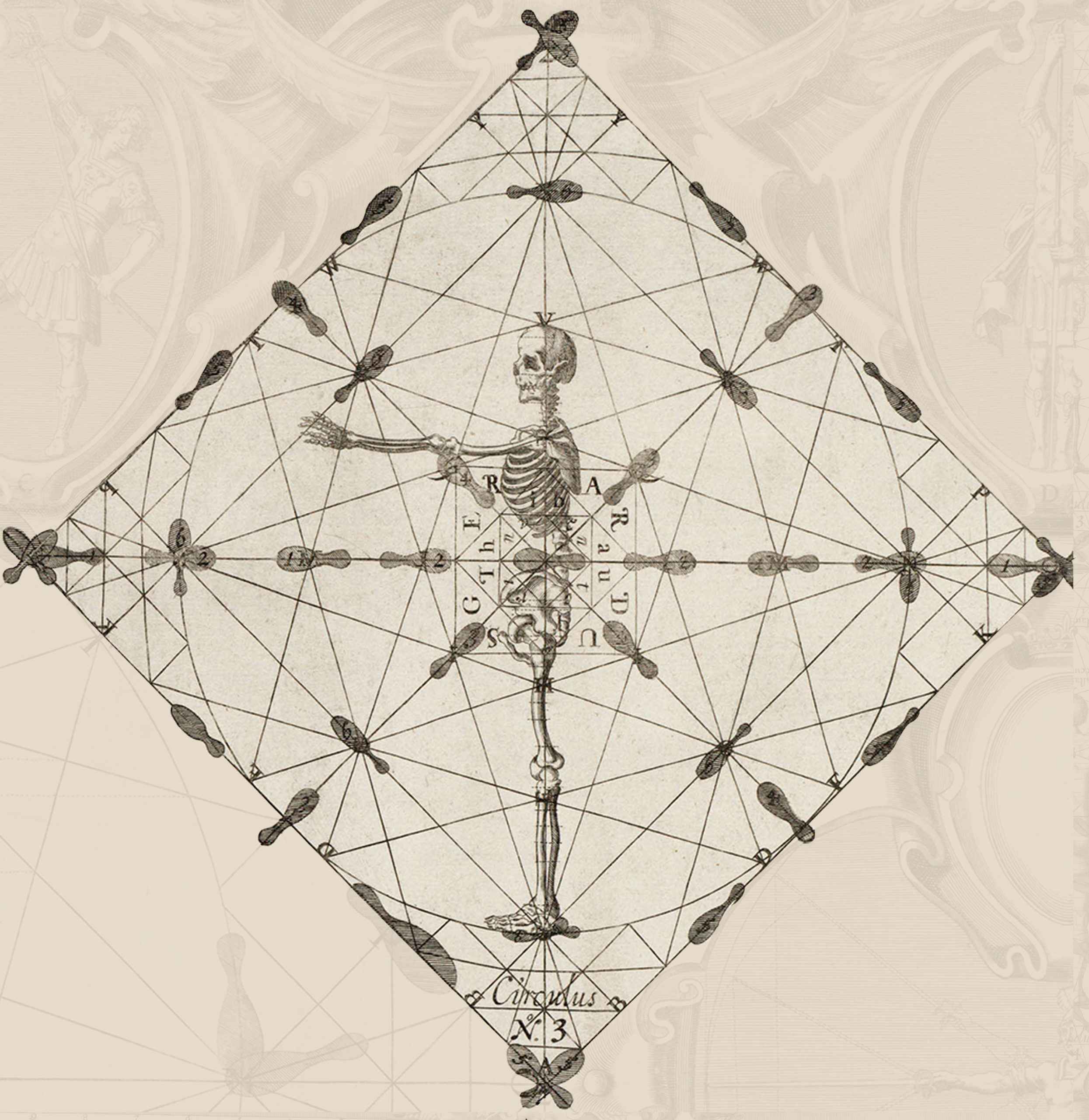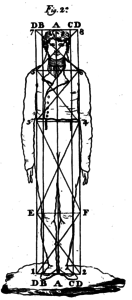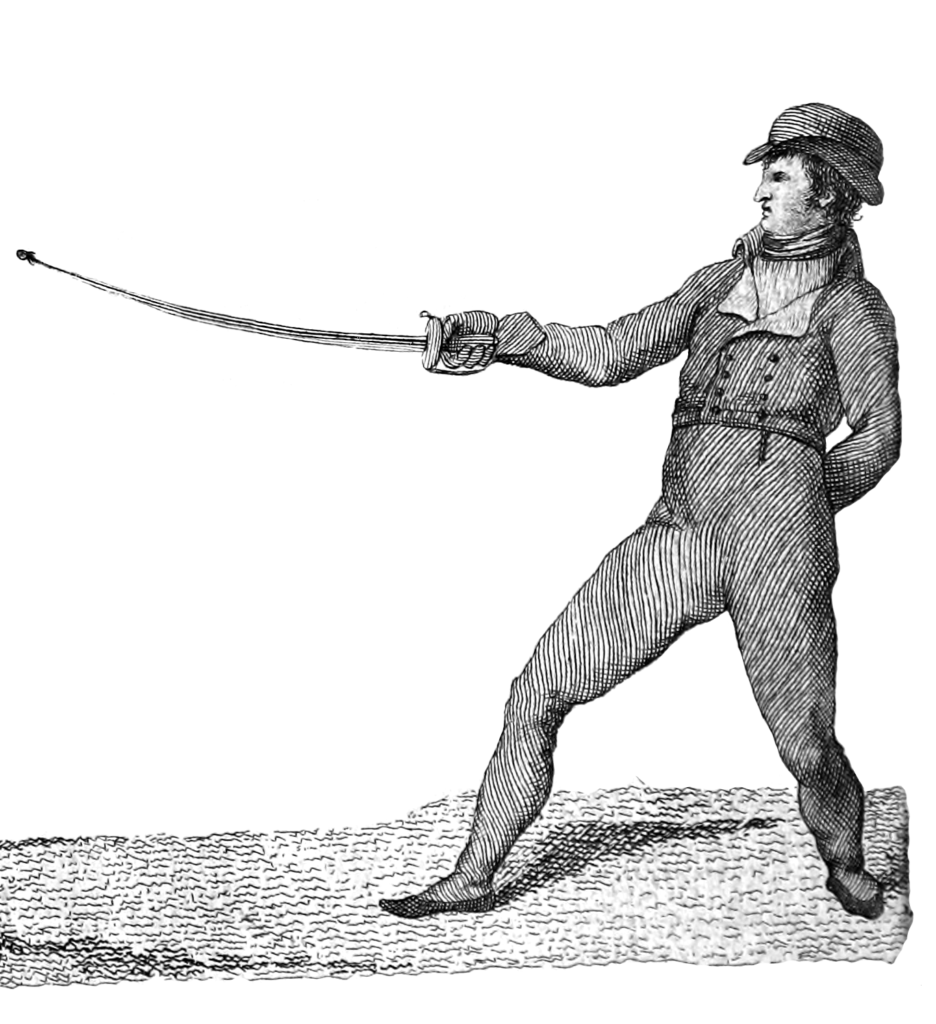241. As in the previous chapter, where I placed the enemy repairing with fourth, the first thrust that was thrown on his guard of third, to attack the points that were uncovered with fourth, so, in this, I am placing him in the guard of fourth, and throwing a thrust of third, which he is obliged to repair with the removal of the same name, in order to attack successively the points uncovered on this removal, beginning with those are formed from below the guard, and ending with those attacks formed by the point. These circumstances will be present in the battles that follow here, without my repeating the guard of fourth.
First Battle:
Thrust of Third, of Fourth, and a Counter Edge Blow
242. The enemy, having repaired with third, the first thrust that was thrown, the one who commits will balance back and freeing below, inflict a thrust of fourth, turning to incline forward in this execution. The contrary will repair this wound with fourth of the second order, presenting the arm so that, applying the counter edge in the low line, you execute a cut with this, throwing to arrive strongly and making, at the same time, a Spanish leap back.
243.Remove this last blow with low fourth extending the arm. Instead of this wound, you can throw a vertical cut to the arm, formed from below the guard, or a diagonal half cut to the knee.
Second Battle:
Thrust of Third, of Second Between the Weapons, and a Half Reverse
244. The enemy having repaired the first thrust with third, the attacker leaves the line on the right side and executes of a thrust of second between the weapons, which is removed by the enemy with low fourth and without motion of the body, giving opportunity for freeing from below, inflicting a half reverse to the arm, recovering in the same time.
245. Remove this half reverse with the collection of high third (§ 147). Instead of the half reverse, you could form from below, a vertical to the head.
Third Battle:
Thrust of Third, Half Reverse, and a Thrust of First
246. The opponent being in the guard of fourth, throw the first thrust with a step and advance a half step with the left foot, this is repaired with third. The attacker will leave the line on the right side, forming with the point, a half reverse. However, for this it is necessary that the one who removes has lowered the tip of their sabre below the superior plane. Remove this blow with the parry of second, and without motion of the planes, by virtue of which you uncover the point for a thrust of first.
247. This last blow is avoided by making a parry of the same name, but it is necessary that, in its time, the left foot goes quickly to the right diagonal. Instead of this thrust, you could execute a vertical to the head or arm.
Fourth Battle:
Thrust of Third, Diagonal Cut, and Thrust of Second
248. The first thrust with which the enemy is attacked must be accompanied by the advance stated above, so that, as a consequence of his removal of third, you will leave the line on the right side and execute a diagonal cut to the face, formed by the point.
249. This wound is repaired with high fourth, removing the left foot on the right diagonal. More, if in this removal the guard goes higher than the superior plane, opposing the right collateral, inflict a thrust of second below the point. But, if it stays at the regular height, it will be a half cut to the arm. These two blows are repaired with low fourth*.
* Since this removal of low fourth from above is one of those that aids in the movement which brings the enemy’s sabre to offend, it needs to be done not only with union, but with much exactitude in the path of the planes that they must circumscribe. The guard must therefore run from the place which it occupied in the high removal, up to the right collateral, and to the English height, being distant from the body by more than a third, dividing the elbow, and the point of the sabre outside of the right vertical of the contrary, a little more below the superior plane, taking care to bend the body, extending the right leg in order to avoid touching the point of the enemy sabre in its journey, noting that all movements are made in one time.
Fifth Battle:
Thrust of Third, Diagonal Cut, and Thrust of Second
250. Suppose that the enemy has repaired with third the first thrust you shot with an advance of the left foot. Free the sabre by the point of the contrary, and leave the line on the right side, executing a diagonal cut to the side. This is repaired by the contrary with first, removing the left foot on the right diagonal, uncovering the point for the thrust of second, with only a movement to square.
251. The final thrust is repaired with second, moving also to square. However, instead of the stated thrust, you can execute, for the third shot, a vertical cut to the arm, or a diagonal reverse to the side.
Sixth Battle:
Thrust of Third, Cut, and Diagonal Reverse
252. The enemy having repaired with third the thrust that was first executed under the previous terms, the attacker will go out on the right side and execute a diagonal cut to the face. This is repaired with high fourth, removing the left foot to the right diagonal, uncovering the point for a reverse to the face formed by the point while moving to square.
253. Remove this reverse with high third, and the motion to square. Instead of this reverse, you could execute a thrust of second below the fist, or a half cut to the knee, basing the sabre on the inside.
